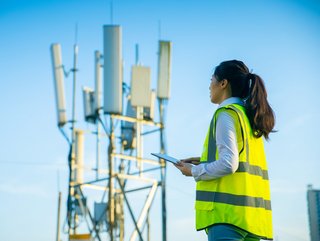Hamish White of Mobilise: Meeting mobile demand

The mobile world has now had time to digest the news that Vodafone and Three UK are merging to create the largest and leading 5G network, with the intention of providing better customer experience and large economic growth for both companies.
With mobile demand greater in the summer months due to increased tourism, networks like EE EE in particular have turned to small-cell networks to provide 4G & 5G connectivity, which was actioned in particular for the expected 500,000 tennis fans attending Wimbledon in London over the summer.
EE has also announced that it is making 125 network upgrades to meet large seasonal demand, including at UK-based festivals like the recent Glastonbury, as well as future events. This is due to the mass need for speed and connectivity for those attending.
Mobile Magazine spoke with Hamish White, CEO of Mobilise, about the pressures that network providers are put under during peak periods, as well as the importance of meeting demand.
Telcos now recognise the value of customer experience
EE’s temporary masts, particularly at mass gathering sites or events, would certainly be welcomed by consumers seeking to avoid connectivity delays due to a high volume. However, consumers may not continue to tolerate such issues.
Speaking on these issues, Hamish White told Mobile Magazine: “According to a 2022 report from Zendesk, 61% of customers will defect to a competitor after just one bad experience. And if they have another poor interaction, 76% will churn. EE’s temporary mast solution helps to ensure that bad experience isn't down to network capacity issues this summer.”
In addition to EE, White also spoke about Vodafone in relation to network expansion, saying: “It’s worth noting the EE isn't the only mobile network operator to be deploying temporary masts — it appears that Vodafone has also done the same. It has made a significant investment in its network for the Glastonbury festival, with nine temporary 5G-capable sites and 90MHz of spectrum deployed.”
Providers like Vodafone and EE are keen to prioritise user connectivity in conjunction with an excellent quality of service. Vodafone UK in particular has launched 5G Ultra, a standalone mobile data service on the company’s upgraded 5G network. It provides fast download and upload speeds that claim to be up to 10 times faster than 4G and boasts greater capacity than either 4G or 5G Non-standalone. This is especially the case for devices in any given busy area, such as a train station, hospital or stadium.
The capabilities of these upgraded networks mean that users can reap the benefits of faster connection in busy areas, or just have a faster connection whilst out and about. It is clear from these developments that network providers are continuing to update their services for customers.
Network capacity to become a wider issue
Hamish White comments further on this, stating: “Telcos are waking up to the value that customer experience (CX) holds in the current market. While it's not a direct revenue generator, it's clear that EE has recognised the need for quality service and is now going above and beyond to ensure its customers get connected.”
He continued: “This isn't just an issue that affects festivals and sporting events. According to Ofcom's Meeting future demand for mobile data paper, data traffic grows at around 40% YoY. As the demand for data grows each year it's inevitable that network capacity will become a wider issue.
“Upgrading to new technologies that can enable better spectral efficiency, so more data can be carried over a given quantity of spectrum. There could be more extensive deployment of existing spectrum holdings. And lastly, deploying spectrum on more sites, also called densification of the network.
“While each of these strategies will support increased network capacity, they are long-term solutions. In the meantime, temporary masting solutions will provide a stopgap solution to boost capacity and support consumers to get online this summer.”
- Extreme Labs Launch: A Networking Hub for R&D and InnovationTechnology & AI
- Extreme Networks: Revolutionising Outdoor ConnectivityConnectivity
- MWC24: Harnessing AI to Modernise Telcos with Tech MahindraTechnology & AI
- Swisscom Buys Vodafone’s Italia Business for €8bn (US$8.7bn)Mobile Operators






